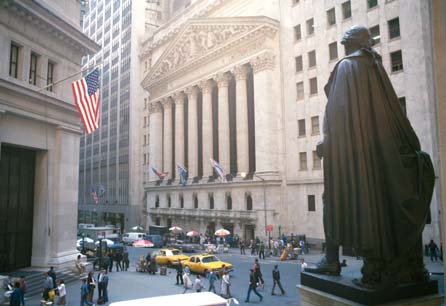Dave Kansas blogs at The Wall Street Journal’s MarketBeat
The stock market is feeling a great deal like Federal Reserve chief Ben Bernanke’s news conference this past week: a long, hard, eyelid-heavy slog.
The Dow Jones Industrial Average, for all its herking and jerking, is up a scant 3.1% at midyear. The Nasdaq Composite is essentially unchanged.
In a grinding market, a smart strategy involves hunting for yield—getting paid to wait. There isn’t much yield in Treasurys. Cash isn’t paying anything. And municipal bonds face uncertainty as governments work feverishly to get budgets back in order with varying degrees of success.
That means, paradoxically, that the stock market is the best place for yield hunters right now. And thankfully, there isn’t any shortage of blue-chip stocks sporting strong dividend yields. (The dividend yield is the company’s annual dividend payout divided by its share price.)
So, what makes for a good dividend yield? One simple benchmark is the 10-year Treasury, which currently yields about 2.9%. It isn’t hard to find stocks that yield more than 10-year Treasurys, and the tax treatment for dividend income (15%) is better than tax treatment for Treasury coupon payments (as high as 35%). Dividend-focused investors also should look for stocks that have superior yields to the Standard & Poor’s 500-stock index, currently about 2%.
Dividends have long been part of a prudent investment strategy. Since 1926, about 40% of the total return of the S&P 500 has come from dividends. The dividend yield on the S&P 500 rose to 5.53% in 1979, but then declined steadily, falling to 1.14% in 1999 before starting to edge higher.
Some will note that dividend yields rise as stock prices fall, and that sometimes a high dividend yield can indicate bigger problems ahead. For instance, bank stocks sported strong yields before the financial crisis broke in 2008. But once the calamity struck, banks (and others) severely slashed or eliminated dividend payouts to preserve capital.
The elimination of dividends during the financial crisis underscores a separate issue: Dividends aren’t guaranteed. Companies need to generate excess cash to keep paying them.
This time, the backdrop for dividends looks strong. The companies in the S&P 500 have a record $1 trillion in cash, and continue to generate lots of it. Analysts expect earnings for the second quarter to rise by 14.1%, according to FactSet, a data provider.
“U.S. companies seem in excellent shape from a liquidity perspective, as free cash flow per share remains in a secular uptrend,” says Brian Belski, chief strategist at Oppenheimer & Co. He adds that stock investors, frustrated by the go-nowhere market and very low fixed-income yields, will increasingly “consider equities as a yield alternative.”
Utilities are a favorite yield play, especially since they have a history of steady stock-market performance. Consolidated Edison (4.6%), American Electric Power (4.9%) and Duke Energy(5.4%) are among the higher-yielding utilities.
But what is surprising about the current environment is how many nonutilities are paying outsize dividends. Currently 11 of the Dow’s 30 components have yields north of the 10-year Treasury’s 2.9%, topped by AT&T, with a dividend yield of 5.7%.
Merck and Pfizer each have dividend payouts of about 4%. Tech giant Intel is sporting a healthy yield of nearly 4%, even as it promises 20% earnings growth and is buying back shares. That is what a cash hoard can accomplish.
Some companies within the Dow below the 3% threshold, such as 3M (2.4%) and Coca-Cola(2.9%), have a history of increasing dividend payouts. Both are members of what S&P calls the Dividend Aristocrats, companies that have increased payouts every year going back 25 years. Other members include Clorox (3.6%), McDonald’s (2.9%) and Target (2.6%).
Not only are the Aristocrats paying a decent yield, their price performance also is outpacing the S&P 500. The S&P 500 Dividend Aristocrats Index has a total return of 5.7% and a price return of 4.3% year to date. The S&P 500 has a total return of a bit more than 3% and a price return of 2.3%.
Telecommunications stocks like AT&T are among the best payers in the market right now.Vodafone Group and Verizon Communications both are paying dividend yields of more than 5%.
One group that has drawn a lot of value-investor attention of late that isn’t participating in the dividend game: the banks. Some, such as J.P. Morgan Chase and U.S. Bancorp, have raised or initiated dividends, providing investors with yields around 2%. But others, including Goldman Sachs Group, Morgan Stanley, Bank of America and Citigroup, pay more paltry yields.
Given the likelihood of a drifting and at times scary market, investors will rest easier if their accounts are collecting the plentiful dividends on offer.









